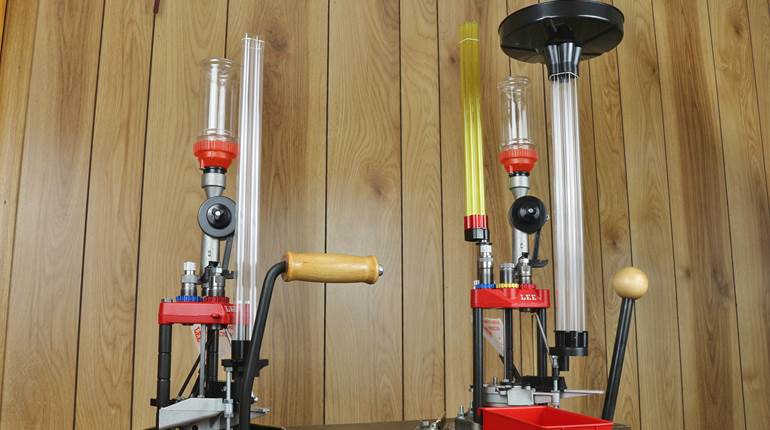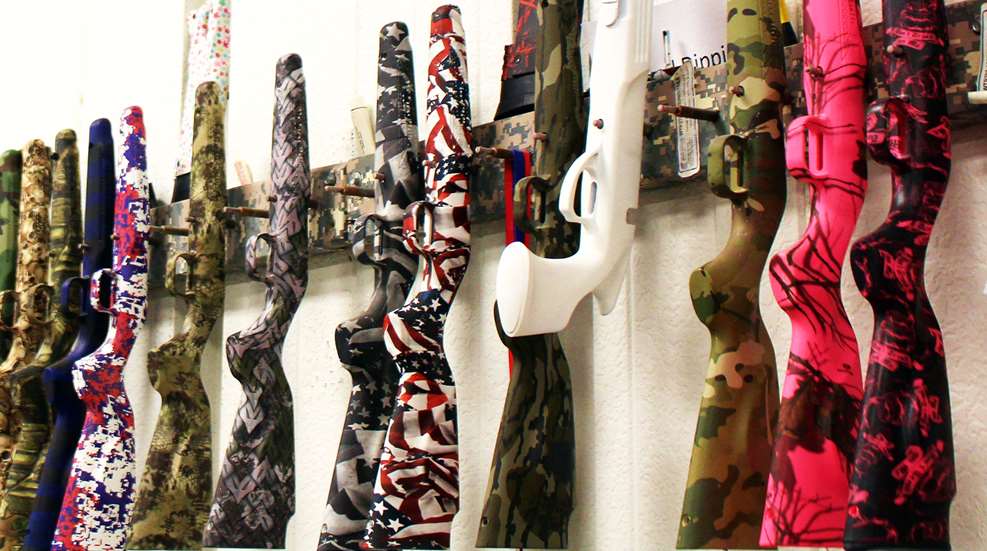
When illuminating the rabbit hole that firearms ownership, is I often recant the tale of the “most expensive” piece of equipment I’ve ever purchased. About a year into learning how to reload, I attempted to source a 9 mm taper-crimp die from a local gun show, a $10 item. Walking in with the full intention of solely buying this solemn tool, I walked out with a pristine M1903 Springfield. I always use that story as the be-all, end-all when exchanging instances of firearm-related overspending. For decades, I reigned as the undisputed champ within my circle of friends, until I met the owners of Keystone Arms Inc. and the famous Crickett brand of youth rifles, Steve and Bill McNeal. Where I wound up buying a rifle when looking for a reloading tool, the McNeal family wound up buying an entire company when all they wanted were four rifles to auction off!
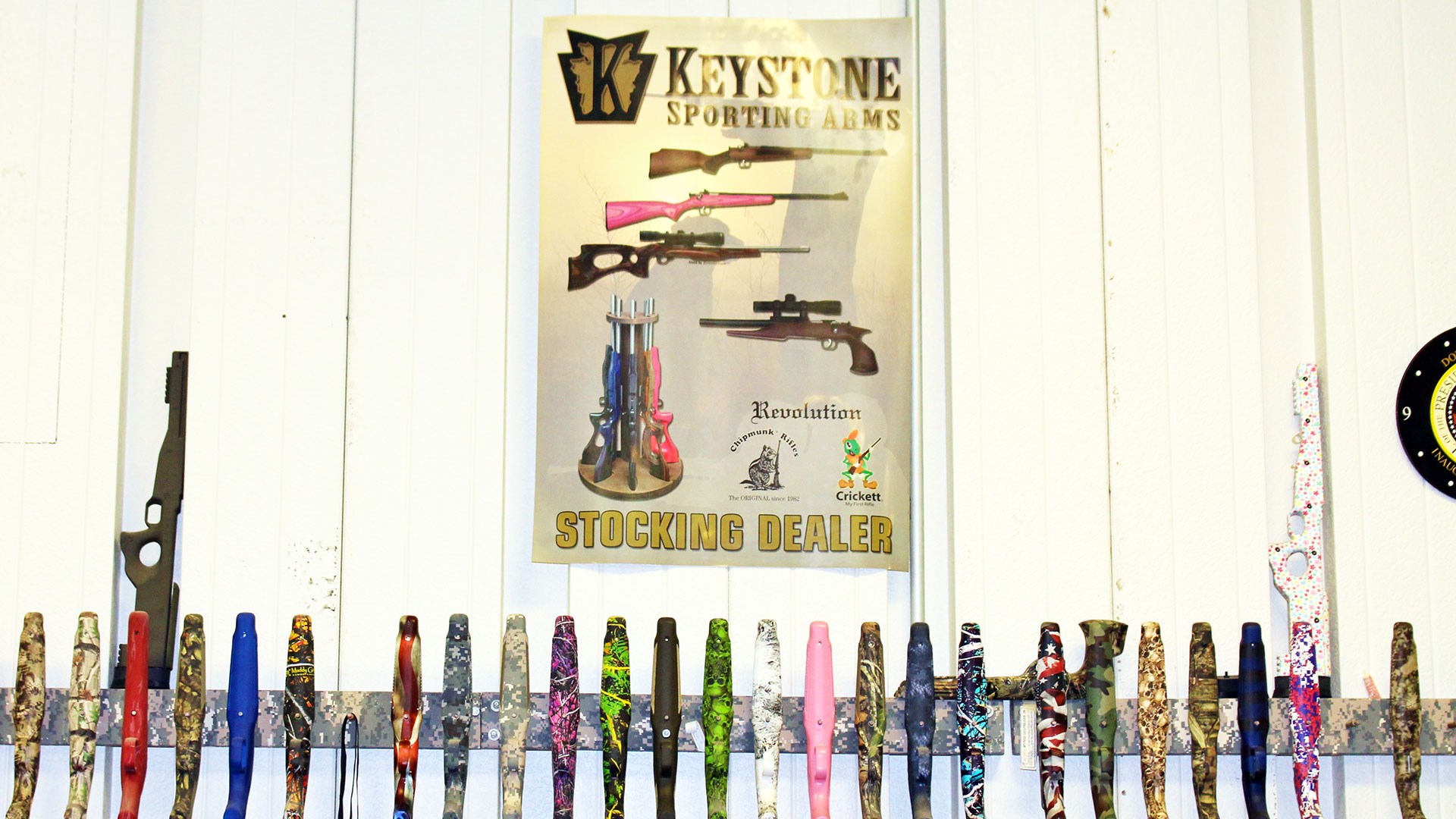 A row of different camouflaged stocks for the Crickett line of rifles on display at Keystone Arms.
A row of different camouflaged stocks for the Crickett line of rifles on display at Keystone Arms.
The story of Crickett rifles and its parent company Keystone Arms starts back in the days when Bill and Steve were certified auctioneers and were desperately trying to get hold of a few Chipmunk rifles. Upon reaching out to the Oregon-based company, the then-owner enthusiastically offered up the whole enchilada as he was seeking other ventures. Well, the story isn’t as cut and dry as a simple acquisition (business seldom is), but it did lead to the McNeal’s redesign of the Chipmunk, overtaking the original Chipmunk in sales and eventually buying it out some 11 years later. As time went on, Crickett continued to produce rifles for the masses, but it wasn’t until early 2021 that I realized exactly how many they have made. It turns out that the company not only turned 25 this year, but it also was about to make its one-millionth rifle.
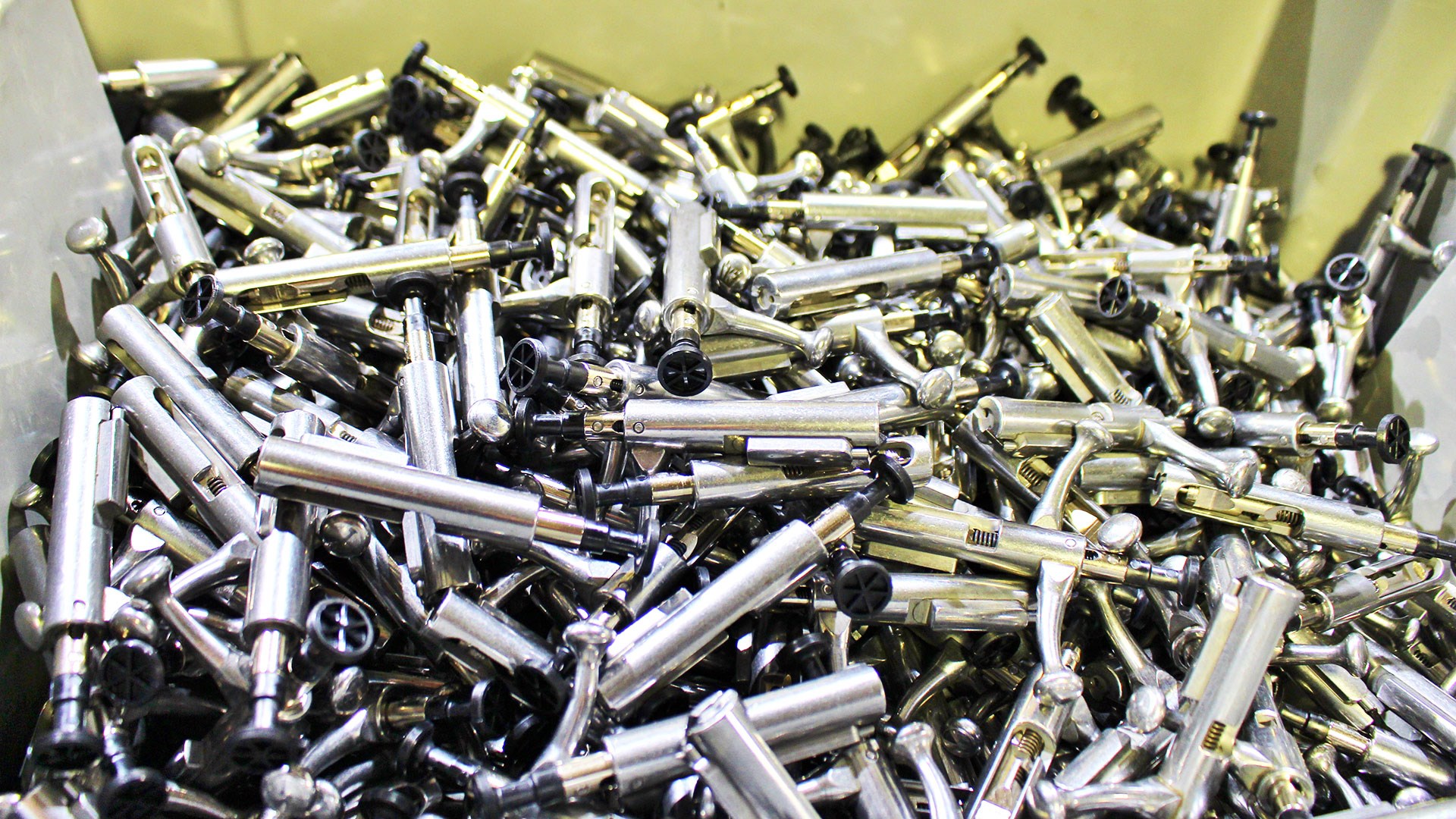 A pile of bolts for the Crickett rifle waiting to be matched with a barreled receiver.
A pile of bolts for the Crickett rifle waiting to be matched with a barreled receiver.
A milestone like that is certainly worth a look, and being that the factory was only about four hours away from home, I rounded up the wife and our faithful coonhound for an inside look of how these folks make it happen. Our tour started with meeting Bill, Steve and Erin McNeal in the general operations office, just off the main entrance way of the facility. Together, with the help of many other family members, they still directly oversee the day-to-day operations. Both Bill and Steve caught us up on Keystone’s history as described above, and shared a deep passion for making life as comfortable as possible for their 55+ employees. The McNeals truly put principles before profits and strive to improve the community as a whole through the offering of gainful employment and a purpose-built rifle that is capable of teaching firearms safety to children as early as possible.
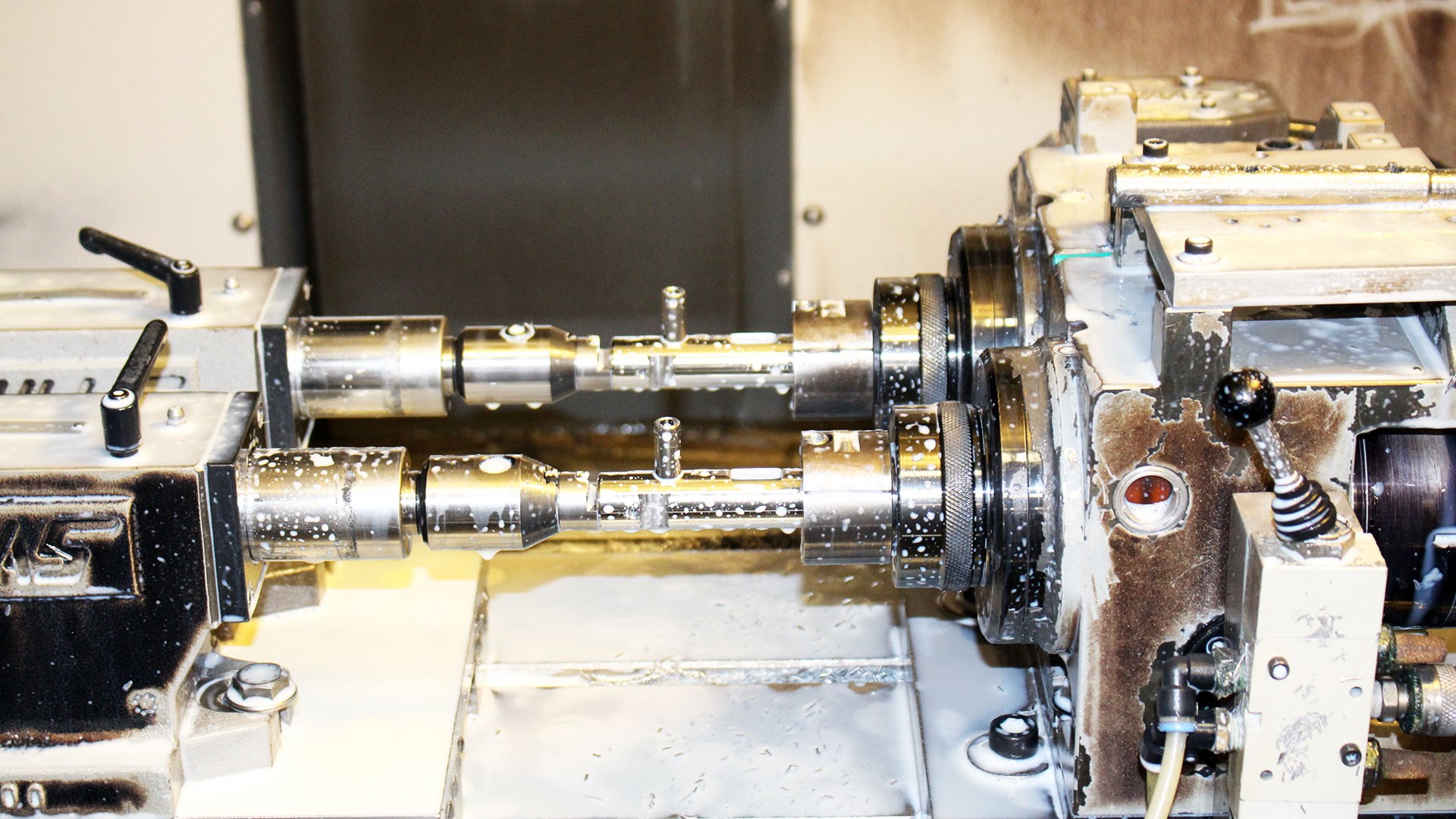 A view of one of the CNC machines at Keystone Arms milling out Crickett receivers.
A view of one of the CNC machines at Keystone Arms milling out Crickett receivers.
Steve’s office door opens directly to the production floor, and without so much as a foot’s worth of hallway, we were in the thick of things. Steve began to explain that, as time went on, they shifted to the in-house production of each of the rifles’ 38 parts, even down to the pins and screws at times. Keystone started with the takeover of its own barrel production, then receivers, bolts, firing pins and eventually stocks. This is largely the reason for the monstrous 70,000 square-foot production facility. By doing so, they are able to make a rifle four times faster than when they first started and also keep costs down. Over the 25 years, that Keystone has been in business, it has only had to increase its wholesale price point by less than 0.5 percent per year.
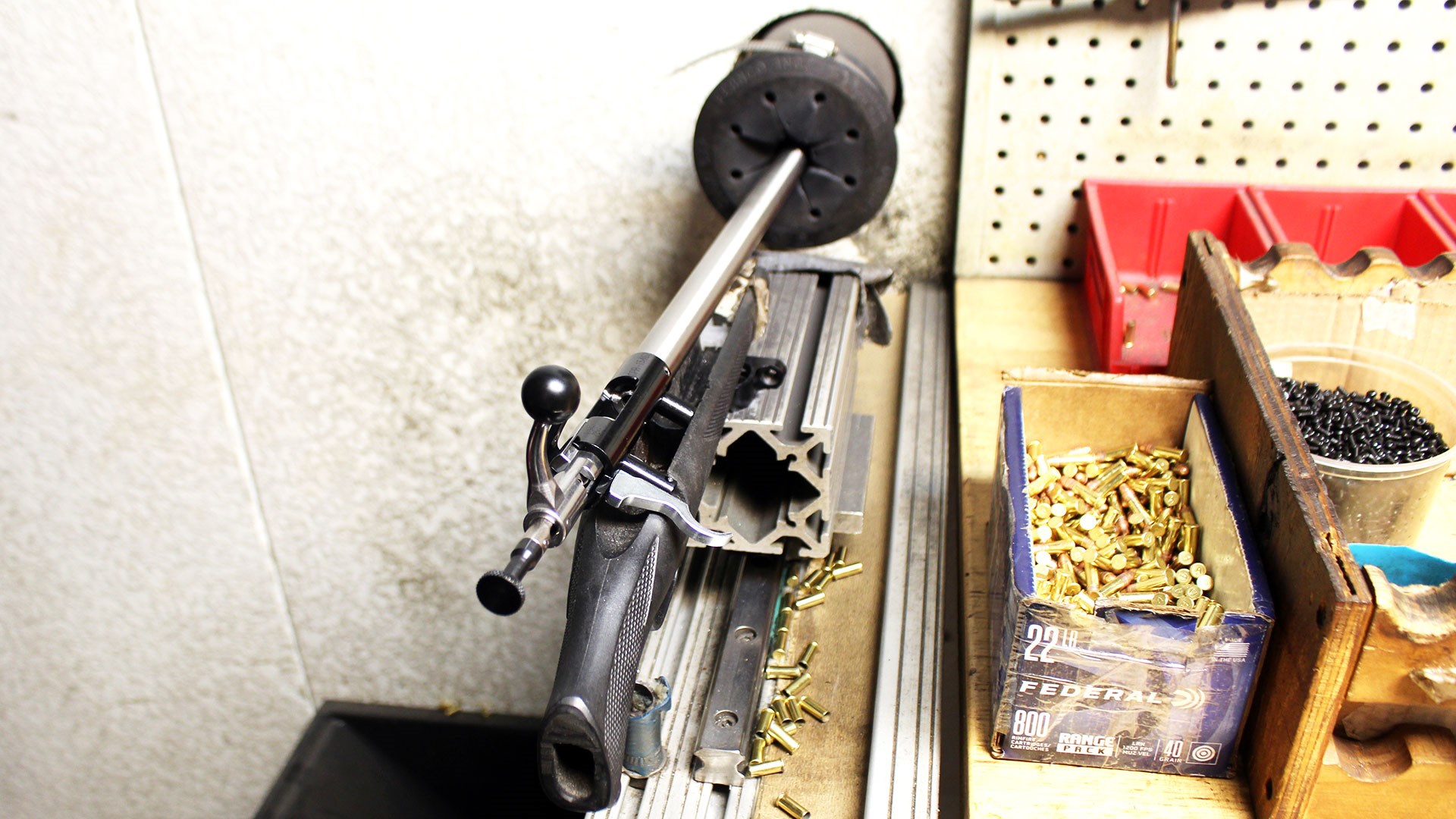 A completed Crickett barreled receiver in the test-firing booth.
A completed Crickett barreled receiver in the test-firing booth.
As we rounded the corner, we found ourselves in the final assembly room where bins and racks of parts sat in various stages of production. One of the first racks that I passed was stacked with finished stocks, and lo and behold, they had just completed a large run of the NRA-exclusive Overwatch variant. Moving along, we entered the area where bolts are assembled and then installed onto freshly barreled receivers. Before moving on in the assembly process, each is test-fired, and I even had the privilege of pulling the trigger on one a few times to make sure it met Keystone’s standards. After starting with a bang, we moved onto the receiver production area where the latest CNC machines are used to turn a simple piece of steel into what will eventually become the heart of a Crickett rifle. As Steve showed me what was under the hood, I got to watch two get churned off in extraordinarily short order.
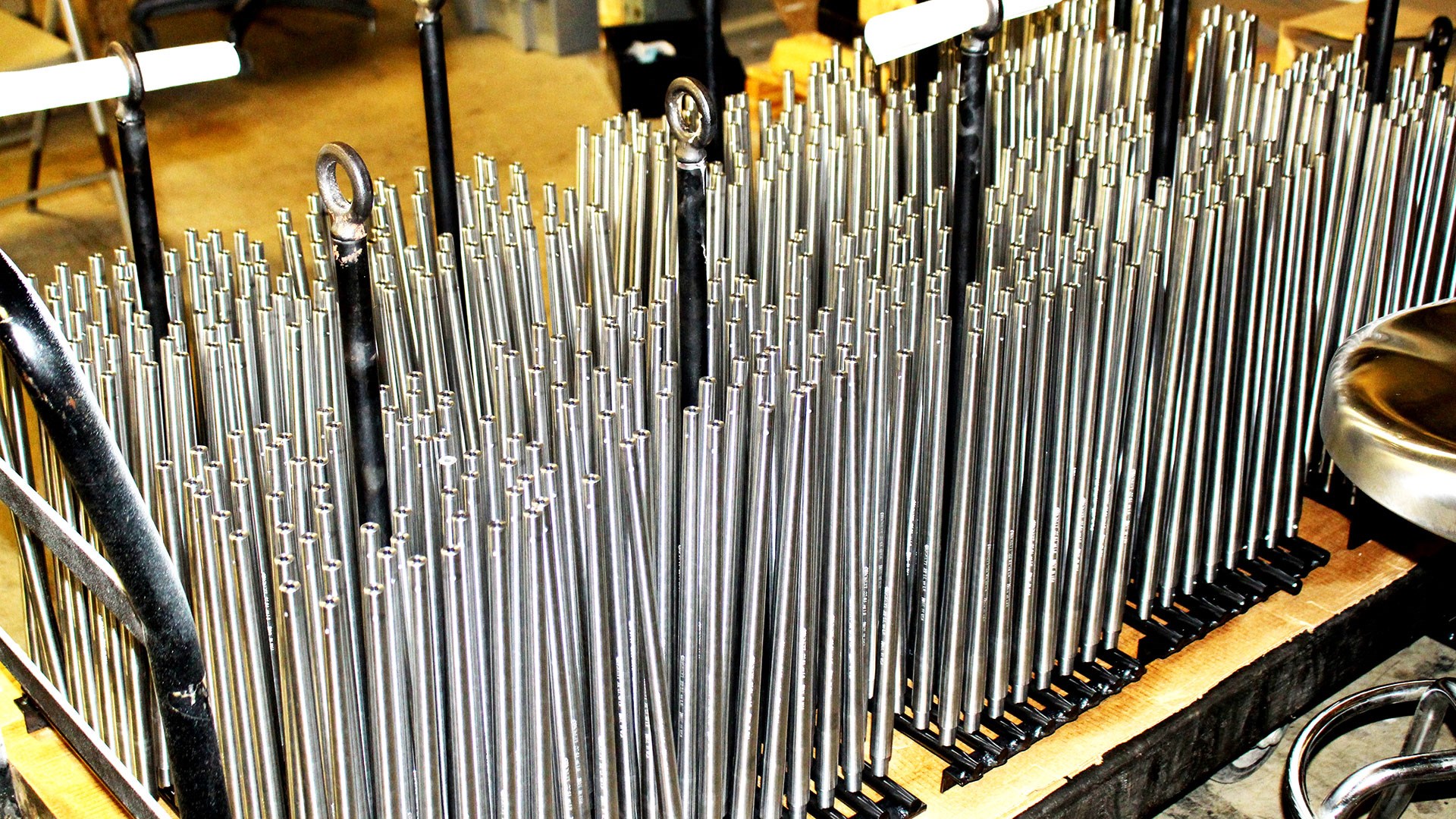 Rows of Crickett barrels lined up during the machining process.
Rows of Crickett barrels lined up during the machining process.
I promised I wouldn’t say how fast, but let’s just say it didn’t make us late for lunch. Local engineers oversee the operation, maintain the machines, and pride themselves on a tolerance that is a paltry +/-.001 of an inch. Also made to these exacting standards are the strikers and the gentlemen on this machine were quite boastful in their ability to make one in less than two minutes. Leaving the CNC machining area, I found myself entering the room where barrels are made. Now, if you ask a gun writer to think hard enough about what they love, most can boil it down to a specific component. There is nothing that intrigues me more than barrel production, so this was the most exciting part of the tour for me.
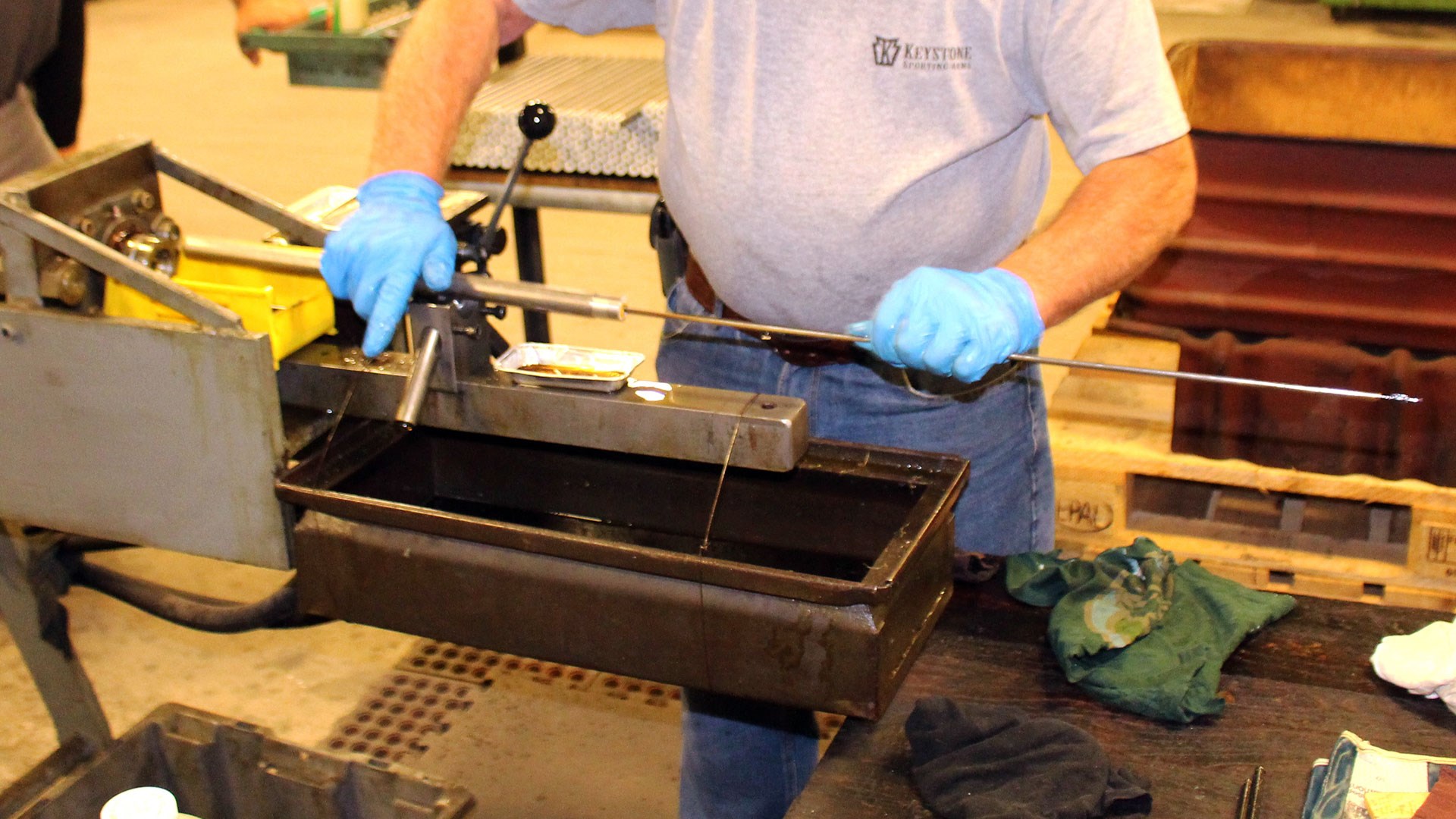 A technician at Keystone Arms placing a barrel onto a button-rifling reamer machine.
A technician at Keystone Arms placing a barrel onto a button-rifling reamer machine.
To my surprise, Keystone doesn’t merely ream chambers into a barrel blank. It creates its own from raw bar stock. You would think for something designed to be “just a kid’s gun,” there wouldn’t be that much attention to detail in this area, but you would be painfully mistaken. As I sat there and learned the secrets of stress relief, I got to watch a rifling button get pulled through at least a dozen barrels. The last area of the facility that we visited that day was where the stocks were made. We started by entering the hydro-dipping chamber where we witnessed the creation of an Overwatch-finished stock.
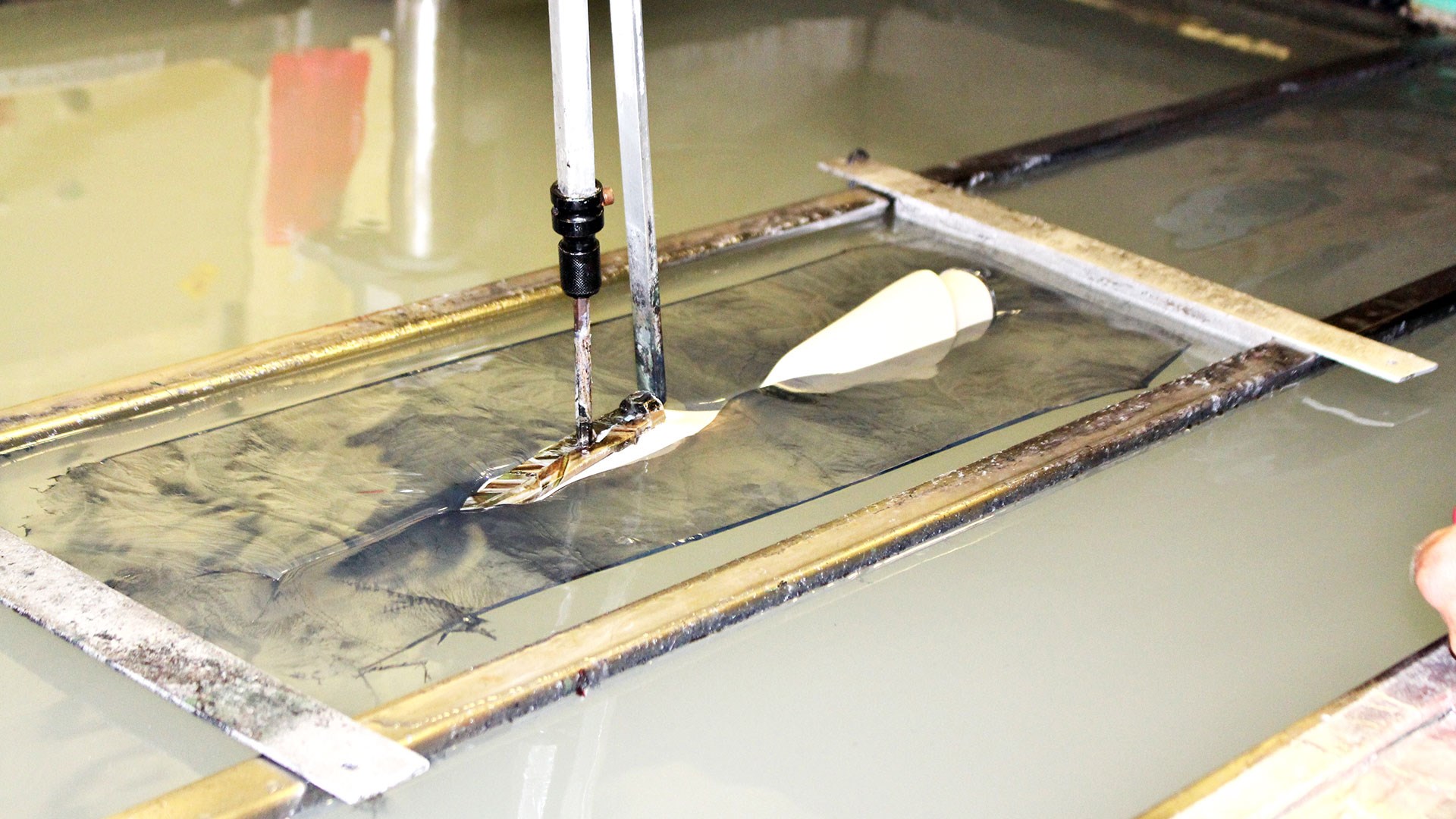 A polymer Crickett stock being dipped into they hydro tank with the Overwatch camo pattern film floating on top of the water.
A polymer Crickett stock being dipped into they hydro tank with the Overwatch camo pattern film floating on top of the water.
The process is unique, as the design is cut from a roll of material, floated atop a liquid bath and then the stock is lowered into it, instantly bonding it to its surface. Steve explained that the hydro-dipping machine came from the reluctant addition of synthetic stocks to the lineup in order to meet the desired specs of a major retailer. Before that, Crickett rifles were only available with hardwood stocks made from Pennsylvania’s greatest resource. Right around this time, we entered the woodshop and got to see all phases of this production right down to the final sanding process, which is still done by hand. I ended the tour by coming face to face with the firearm in question, receiver number 1,000,000.
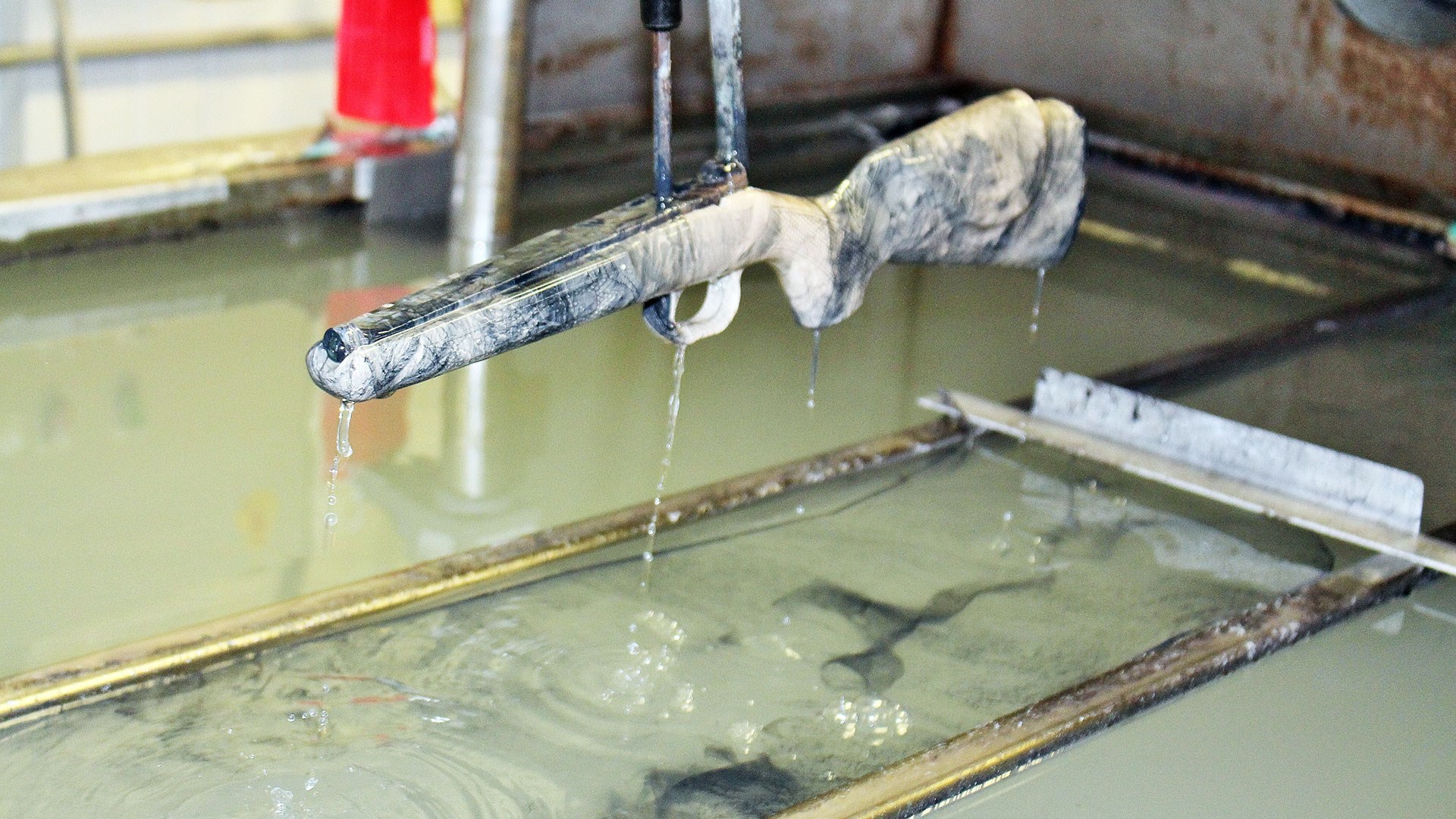 A finished Overwatch stock fresh out of the hydro-dipping tank.
A finished Overwatch stock fresh out of the hydro-dipping tank.
At this time, it was still being determined exactly what it was going to be built into, and that decision laid at the feet of Steve McNeal himself. Back when the Crickett design was being worked out, 10 acceptable prototypes were put together and laid out. While they both stood over the drawing board, Bill asked Steve “which one do you want?” To which Steve replied, “I’ll take number one million." If you ask me, there’s no better way to call dibs than to do so 25 years in advance. As our visit with the McNeal family came to a close, we thanked them for their time and their service to the community.
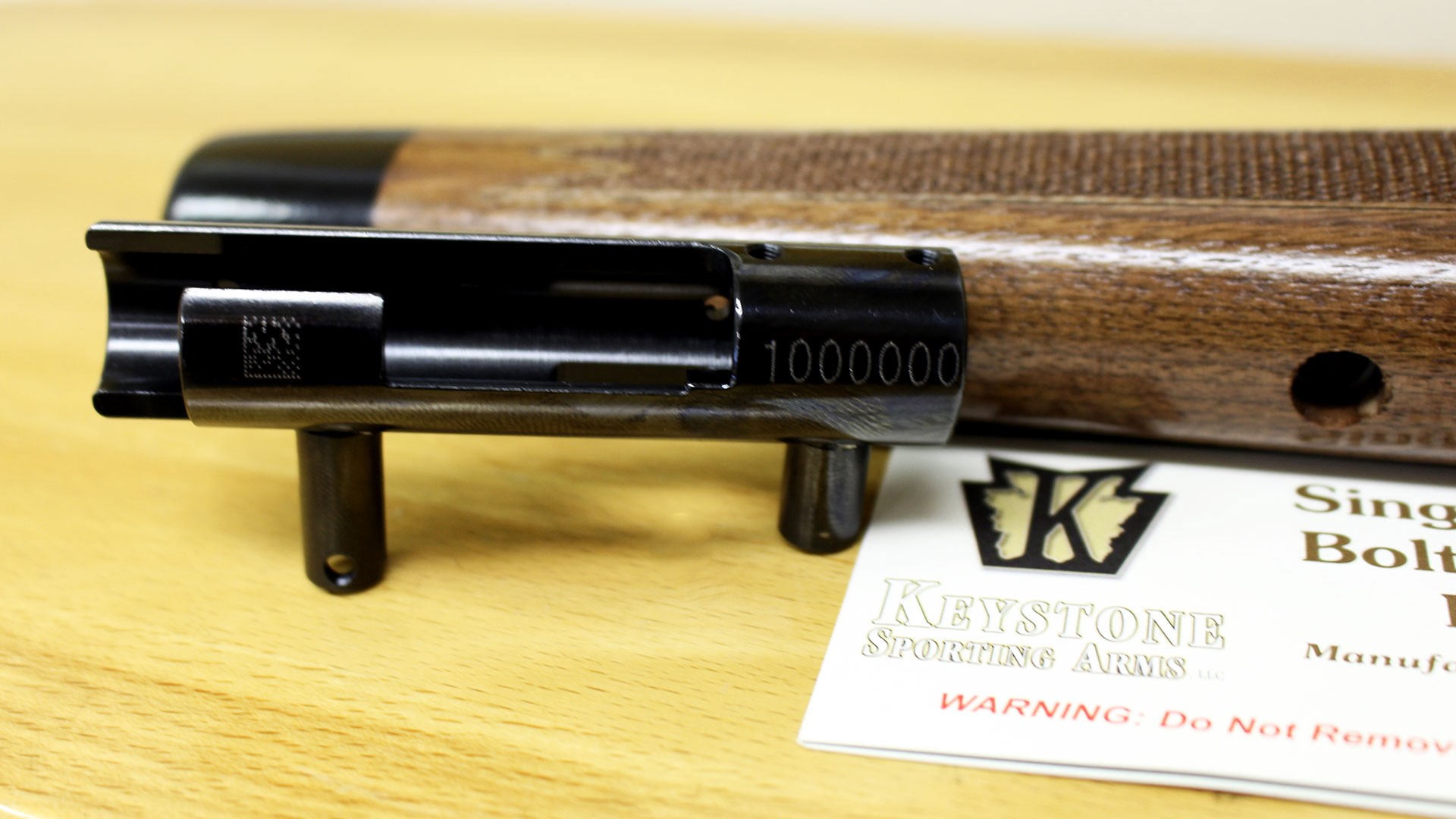 Cricket receiver, serial number one million.
Cricket receiver, serial number one million.
I’ve always been delighted at what I find out when I get to know a manufacturer and its products on a more intimate level, and this trip was no exception. I mean, who would have ever thought that one of the most inexpensive rifles on the market is made nearly completely from scratch and almost exclusively by hand? The inside look of the factory gave me a renewed appreciation of the product, which is only overshadowed by the appreciation that I have for the McNeal family for getting one million of them to the next generation, ensuring the survival of American riflemen and riflewomen everywhere.















